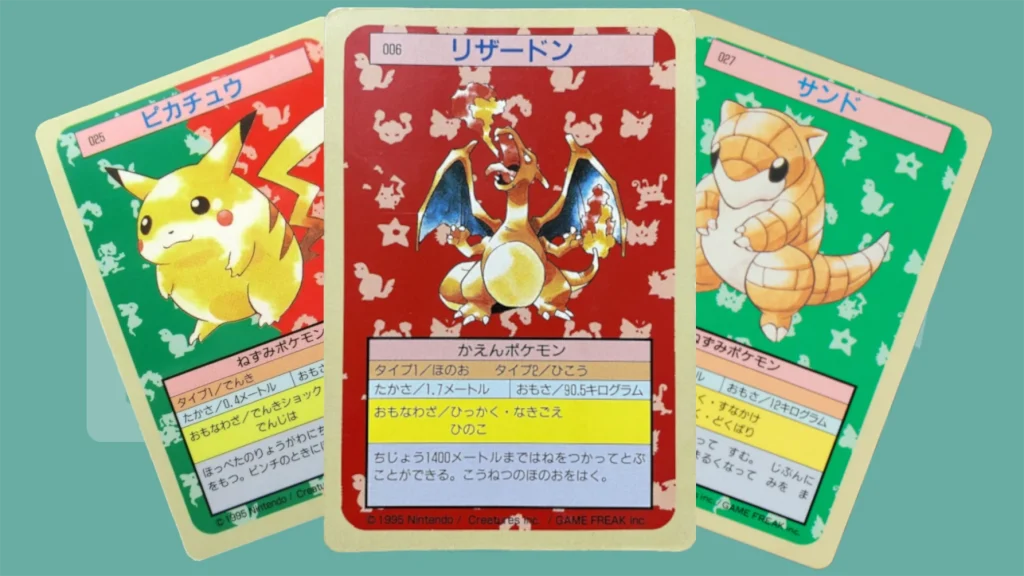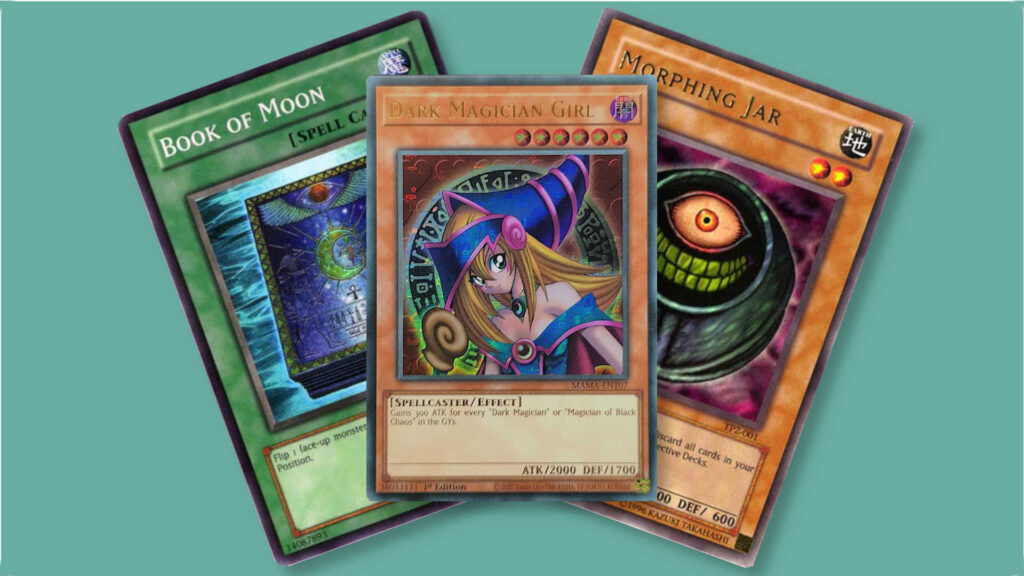Topsun Pokemon Cards were released in 1997 and are well known by collectors as being some of the oldest and rarest Pokemon Cards.
While quickly overshadowed by the Pokemon TCG, which popularity took off a couple of years later, these cards nevertheless provide collectors the opportunity to grab an iconic slice of Pokemon history.
Table of Contents
ToggleWhat is Topsun?
Topsun / Top Seika refers to the Japanese company that manufactured and published Pokemon Topsun cards.
Unlike game publishing companies like Wizards of the Coast (Which produced Pokemon TCG cards in the US between 1997 and 2003), Topsun / Top Seika was a candy company that partnered with companies like Nintendo to market its products.
People often confuse Topsun /Top Seika with Topps, an American trading card manufacturer without ties with Top Seika. Despite it also manufacturing gum packaged with Pokemon cards in the late 90s/early 2000s, Topps is an independent company.
In this article, we’ll refer to the Topsun / Top Seika as just Topsun from hereon.
What are Topsun Pokemon Cards?

Topsun produced their first Pokemon cards to promote packs of gum. Each pack made in this first set contained two cards and a stick of chewing gum.
Every Pokemon featured in the Red & Green games featured on these cards, except Mew.
While the format of such cards differed over various print runs, Topsun never returned to the original design for Pokemon released in later games.
Due to the popularity of cards featuring the original 151 Pokemon, these are highly valued among collectors thanks to their limited print run and collectible design.
So what happened to Mew? While Mew was a “secret” Pokemon, added last minute to Pokemon Red and Green by Shigeki Morimoto after bug-testing was concluded, Topsun’s Pokemon cards were printed in 1997 after the existence of Mew became common knowledge.
The absence of Mew from the Topsun cards is unexplained. However, it is likely either due to Game Freak giving Topsun development assets to create their cards or that Topsun planned only to include Pokemon obtainable in-game on their cards.
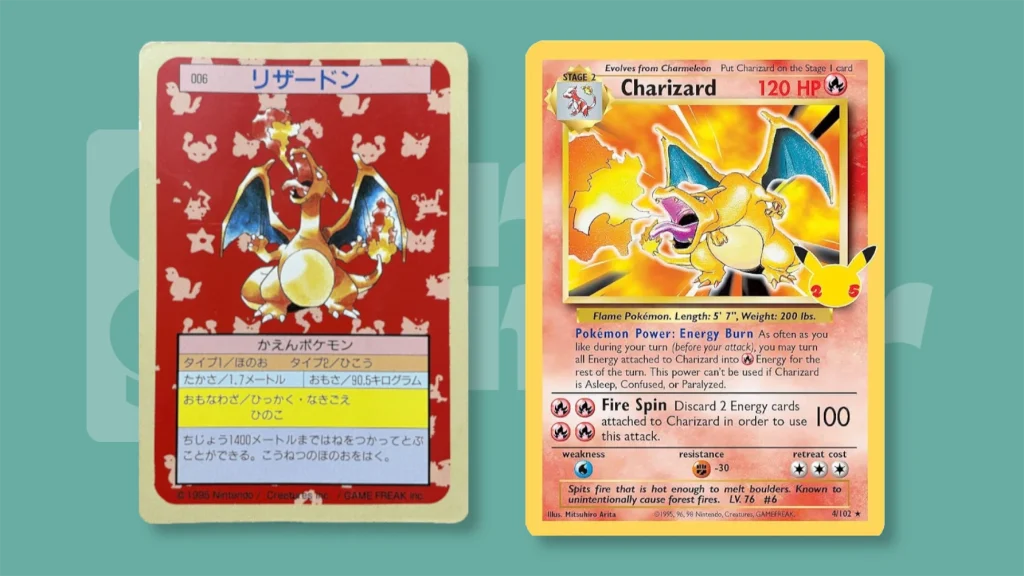
Topsun cards dimensions were 58.7 x 85.7mm, slightly smaller than Pokemon TCG cards (63 x 88mm). They are purely collectible; they cannot be used to play TCG games.
When were Topsun Pokemon cards first printed?
The date Topsun Pokemon cards were first printed is unclear and the source of much debate. While the aforementioned print date of 1997 is accurate, common misconceptions have led to speculation that these are the first Pokemon cards ever produced.
The absence of Mew in the original print run and the “1995” copyright printed on the card has led many to conclude incorrectly that Topsun printed these cards in 1995.
Even the PSA category for Topsun cards is named “1995 Pokemon Japanese Topsun.” However, this 1995 copyright is attributed to “Nintendo / Creatures Inc. / Game Freak,” it has nothing to do with Topsun Pokemon cards.
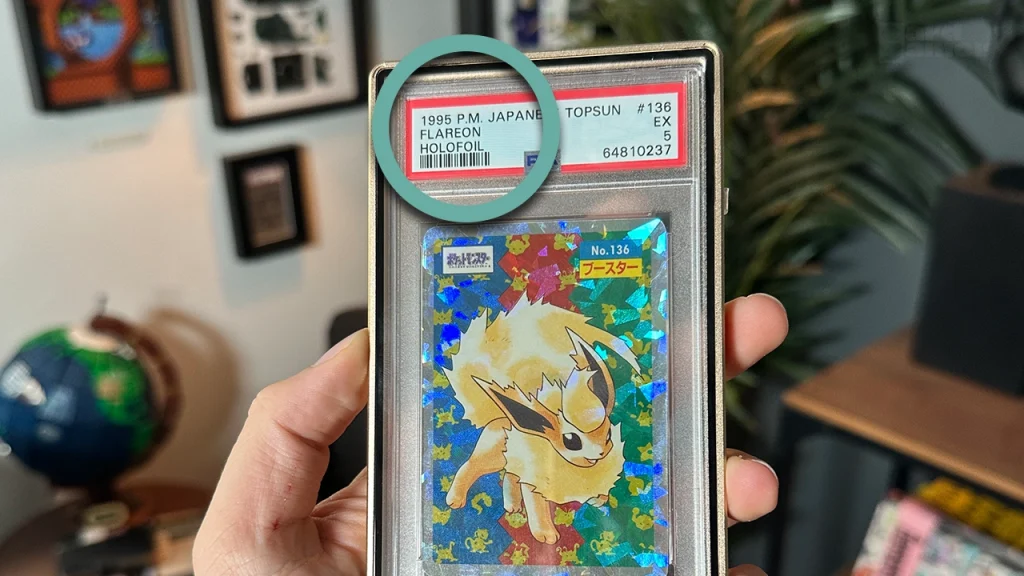
Topsun acquired the license for “Pocket Monsters” in 1997. While they could have theoretically developed trading cards before acquiring the license, there is no evidence.
However, Wizards of the Coast developed a Pokemon TCG card before acquiring the license (now one of the most valuable Blastoise cards), so Topsun may have created and printed cards pre-1997.
That being said, this point is irrelevant as the argument over print date revolves around the mass-produced cards.
Retail production could only happen after acquiring the license in 1997. If pre-license cards were printed, they have never been made available for sale by Topsun or private collectors.
Topsun Pokemon cards do not feature any symbols or logos to identify their print date. Cards printed later than the first print run are indistinguishable from later cards, with the exception of misprints in the first print run.
Unlike Pokemon TCG cards, Topsun cards from the same set are almost impossible to date precisely.
A 1997 print date, therefore, means that Topsun cards are not the oldest Pokemon cards, as Bandai Cardass Pokemon Cards were printed in September 1996.
What variants of Topsun cards exist?
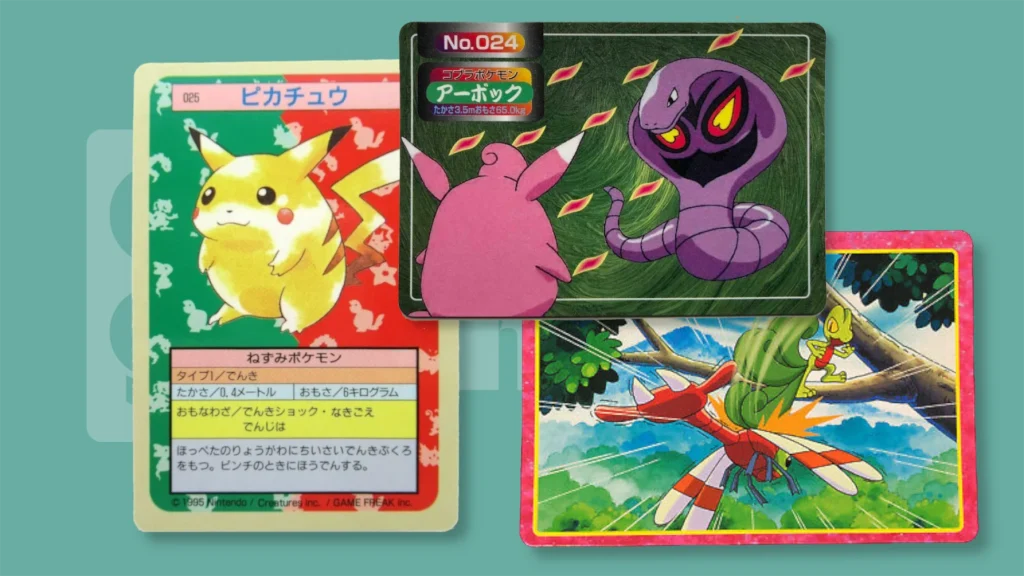
Just like Pokemon TCG cards, Topsun printed a wide range of Pokemon cards over the years. While the range of cards is less extensive than the TCG, a variety of minor differences within print runs and the rare Holofoil cards mean there is plenty of opportunity for collectors to acquire rare or valuable cards.
The “Blue and Green” Topsun Pokemon cards
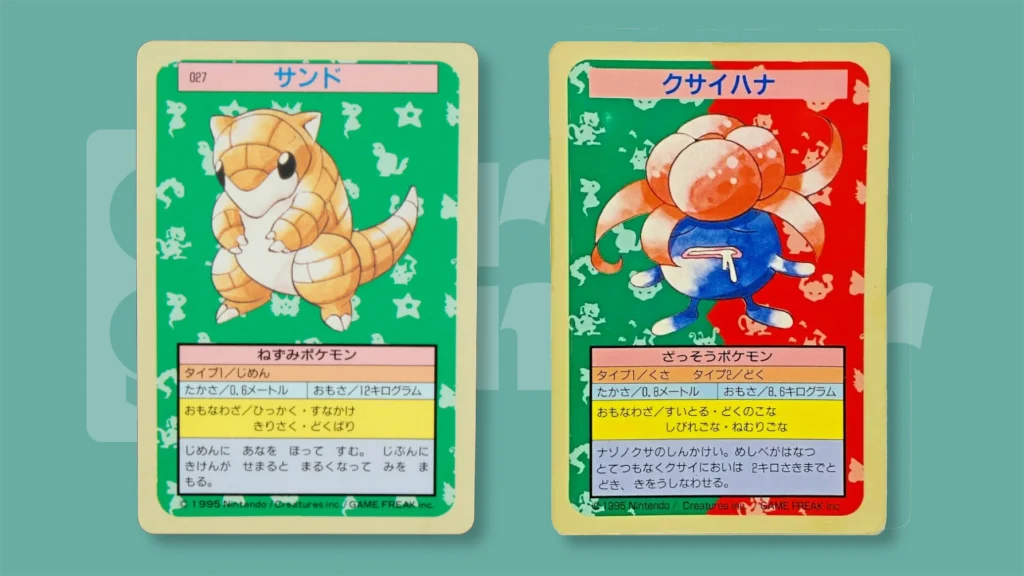
The first Topsun Pokemon cards featured one Pokemon on the front, alongside its attributes (e.g., height, weight) and Pokedex entry. The rear of each card featured either a blue or green text pattern depending on their print run.
The first print of Topsun cards featured a blue text pattern, making them easily identifiable as “1st Edition” Topsun cards.
These are the most valuable Topsun cards among collectors, and are titled “blueback” on graded Topsun cards.
Later prints of Topsun cards featured the green text pattern, but the front is identical to Blue Topsun cards. These prints also featured Holofoil variants of Pokemon for the first time.

The front of every card featured a red, green, or halved red/green background. While the choice of color roughly equates to the Pokemon’s exclusivity (Where Pokemon available in both games feature a split background), this isn’t always the case.
For example, Sandshrew, which was exclusive to Pokemon Green, features a green background on the Topsun card. Gloom, Growlithe, and Scyther feature split backgrounds despite only being available in one of the two games, and Koffing, a non-exclusive Pokemon, features a green background.
Bulbasaur and Charmander feature green and red backgrounds, respectively, but this is likely to match the video game’s box art.
This inconsistent design may be due to Topsun using development assets, but there is no evidence of Game Freak considering alternative choices for exclusive Pokemon during development.
However, alongside the lack of Mew, this adds credence to the theory that these were the first Pokemon cards ever designed.
Each card features the Pokemon’s Pokedex number in the top-left of the screen; however, the first printing featured an error where the Pokedex number was missing. This error makes these cards the rarest and most valuable variants of the “Red and Green” print run.
After the Blue cards, Topsun started including Holofoil cards in packs. 16 Pokemon received Holofoil prints. These cards featured a print of the Pokemon on the front, while the rear featured a monochrome print of the Pokemon and its stats like the regular cards. The 16 Pokemon featured as Holofoil are:
(Pokemon marked L are in landscape format for their Holofoil prints but are otherwise identical to other Holofoil cards)
- Venusaur (L)
- Charizard (L)
- Blastoise (L)
- Pikachu
- Nidoqueen
- Nidoking (L)
- Machamp
- Eevee (L)
- Vaporeon
- Jolteon
- Flareon
- Articuno (L)
- Zapdos (L)
- Moltres (L)
- Dragonite
- Mewtwo
Unsurprisingly, these are among the most valuable Topsun Pokemon cards. Even less surprising is that a Holofoil Charizard is the most valuable Topsun card, fetching $37,6000 in a 2020 eBay auction.
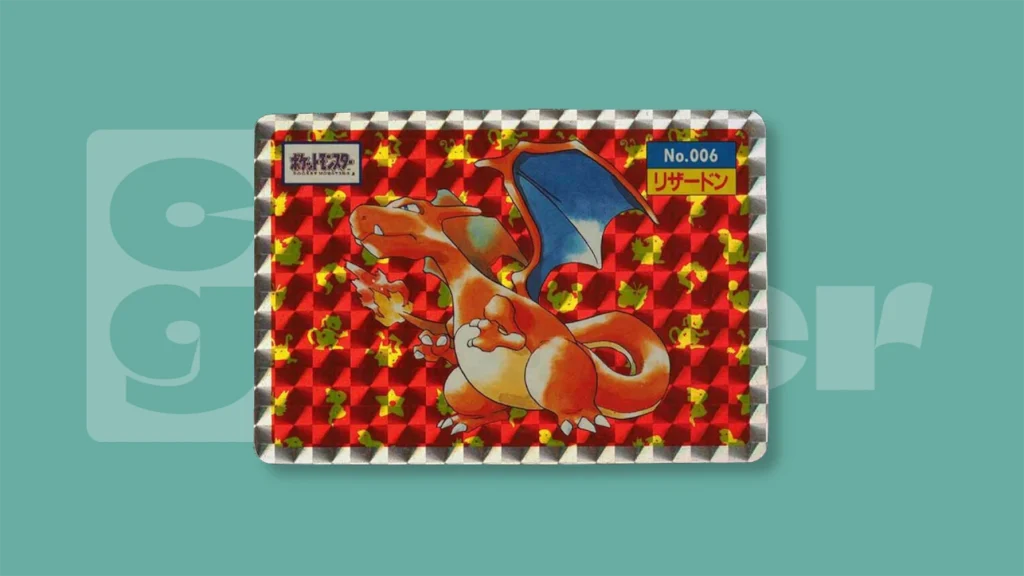
Unlike the Holofoil cards printed for the Pokemon TCG, the Holofoil effect is actually a sticker that can be removed. However, evidence of this is scarce due to the instant devaluation of a de-stickered card.
There are three Holofoil variations; Checkered, Block, and Cracked/Shattered. (Note that these are not official terms for the design, different terms for these Holofoil patterns are in use in the community).
Some collectors do not differentiate between the Checkered and Block variations; they identify them as variations on a theme produced by different print runs. There is no evidence to confirm or deny this.
Topsun distributed their Pokemon cards in booster boxes of 20 packs, one of which would contain a Holofoil card. With two cards in each pack, this gave people a 1/40 chance of pulling a Holofoil card.
The design of the “Blue and Green” Topsun Pokemon card booster packs remained unchanged throughout their existence.
This means that it is impossible to determine whether an unopened booster pack contains misprinted cards or holofoil cards.
The “VS” Topsun Pokemon cards
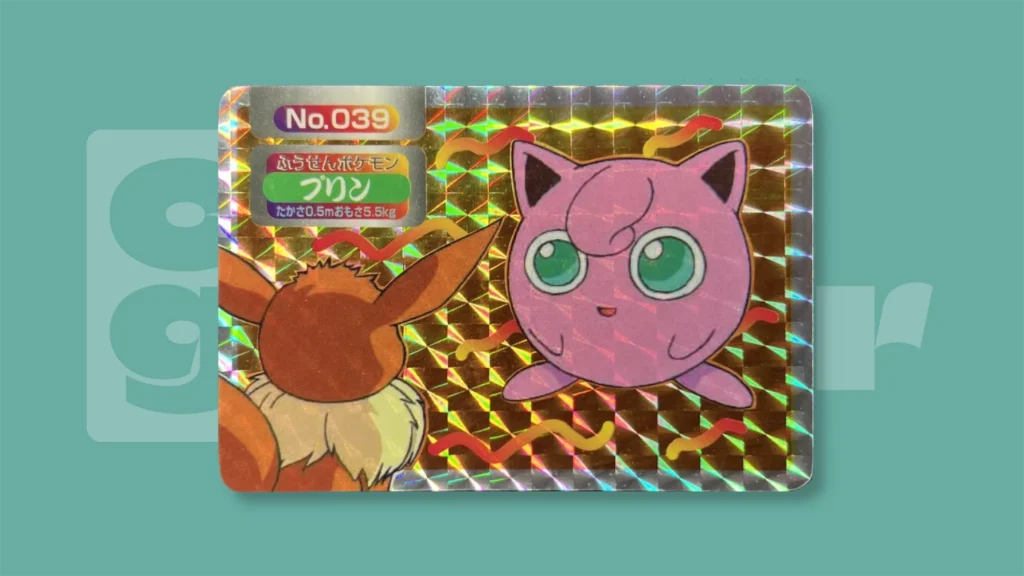
While the “Blue and Green” Topsun Pokemon cards are well documented by collectors, the later “VS” prints are not as prized. However, these cards can nevertheless fetch high prices at auction.
VS cards formed the mainstay of Topsun’s Pokemon card packs for years after the “Blue and Green” prints and featured Pokemon from multiple games.
Topsun printed “VS” Pokemon cards from 1997 onwards. A change in the company’s branding from “Topsun” to “Top” in 1998 helps date these cards, but it is impossible to tell when cards were printed between 1998 and 2002. However, some cards exclusively feature Gen 1 Pokemon, indicating these may have been printed before the release of Pokemon Gold and Silver in 1999. None of the “Blue and Green” Topsun cards feature the “Top” branding; these “VS” cards replaced their single-Pokemon predecessors in all packs.
“VS” cards included Pokemon from Generation 1, 2, 3, and 4, meaning production must have continued into 2006 after the release of Pokemon Ruby & Sapphire in March.
The layout of “VS” cards is completely different from the “Blue and Green” prints. Rather than a single Pokemon on the front accompanied by their Pokedex details, “VS” cards featured two Pokemon battling. The rear of the card features an image and Pokedex entry and stats for one of the Pokemon.
The exact layout of these cards varies over time. The original “VS” cards featured two Pokemon facing off in static poses like the games, whereas later cards featured dynamic artwork of Pokemon battling.
“VS” cards also featured Holofoil prints, but unlike the “Blue & Green” cards, they are not stickers. The Holofoil effect is similar to that on Pokemon TCG cards. It’s unclear how many Holofoil variants Topsun printed, although collectors have documented up to 16 variations, including:
- Mewtwo / Venusaur
- Zapdos / Aerodactyl
- Jigglypuff / Eevee
- Venusaur / Electabuzz
- Clefairy / Horsea
- Farfetch’d / Hitmonchan
- Meowth / Cubone
- Vulpix / Hypno
- Dragonite / Mr. Mime
- Articuno / Pikachu
- Tauros / Vaporeon
- Moltres / Dragonite
- Gyrados / Slowking
- Mew / Magmar
- Chansey / Zubat
- Omastar / Mewtwo
- Charizard / Cloyster
Other variations are named, but we found no image evidence of these Holofoil cards.
“VS” Topsun cards featured different promotional packaging throughout its run. The Southern Islands pack is one of the most popular. Inspired by the second Pokemon movie, like the Pokemon TCG’s Southern Islands expansion, booster packs are regularly sold on auction sites like eBay for around $200.
Miscellaneous Topsun Pokemon cards
Topsun has produced countless Pokemon cards over the years. Some, like the “VS” cards, are relatively common and easy to find, but others are rarer and don’t offer the same opportunities for collectors. Topsun produced these as one-time promotions or as standalone cards.
No Topsun card was ever printed in English, so identifying these cards can be difficult. Unless a Topsun card came from one of the aforementioned sets, it’s probably not worth your time, as they are worth very little.
How valuable are Topsun cards?
The Pokemon cards that make global headlines are from the Pokemon TCG, like these Charizard cards that fetch millions at auctions. However, as noted earlier, the right Topsun card can sell for up to $37,600.
The only Topsun cards graded by PSA are from the “Blue & Green” print run. Cards are categorized into Blue Back, Green Back, and Holofoil prints.
The Blue Back cards were the first printed, so they fetch a higher price. For example, here are the highest prices each variation of Pikachu was sold for at PSA Grade 10:
Pikachu Holofoil – $15,000 (2021)
Pikachu Blue Back – $6,100 (2021)
Pikachu Green Back – $5,300 (2021)
Even Topsun cards of Pokemon who rarely make “Most valuable…” lists are valuable. A PSA 10 Ninetales Blue Back card sold for $980 in 2021.
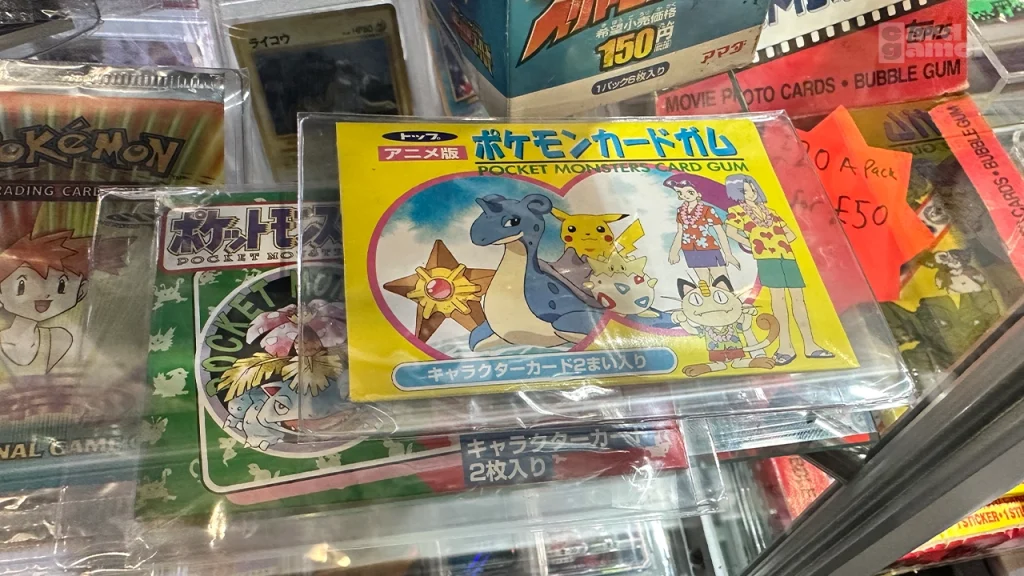
Sealed Topsun booster packs from this print run usually fetch around $800-900 and are relatively easy to purchase today. But as we noted earlier, it’s impossible to guarantee whether one has a chance of containing a valuable misprint or a Holofoil card.
It isn’t just “Blue & Green” Topsun Pokemon cards that are valuable.“VS” cards, especially those from the Southern Islands packs, occasionally fetch high prices at auction.
Whereas a sealed Topsun “Blue & Green” booster pack is worth under $1000, a Southern Islands pack rarely exceeds $200. However, in 2021, a sealed Southern Islands booster box sold for $9,850.
How To Identify Fake Topsun cards
Due to the lower popularity and value of Topsun cards, fake cards are less of a problem than Pokemon TCG cards. However, misprinted Topsun cards are frequently faked.
The most commonly faked Topsun card is the misprinted Charizard card featuring the missing Pokedex number in the top left of the card.
Here are the key elements to look for in a fake Topsun card. We’ll examine features from the first print run, as these are the most valuable.
Little Or No Gloss
Non-Holofoil Topsun cards have a high amount of gloss. Any card withlittle or no gloss is fake. However, identifying the correct gloss from a picture is challenging.
Title Box
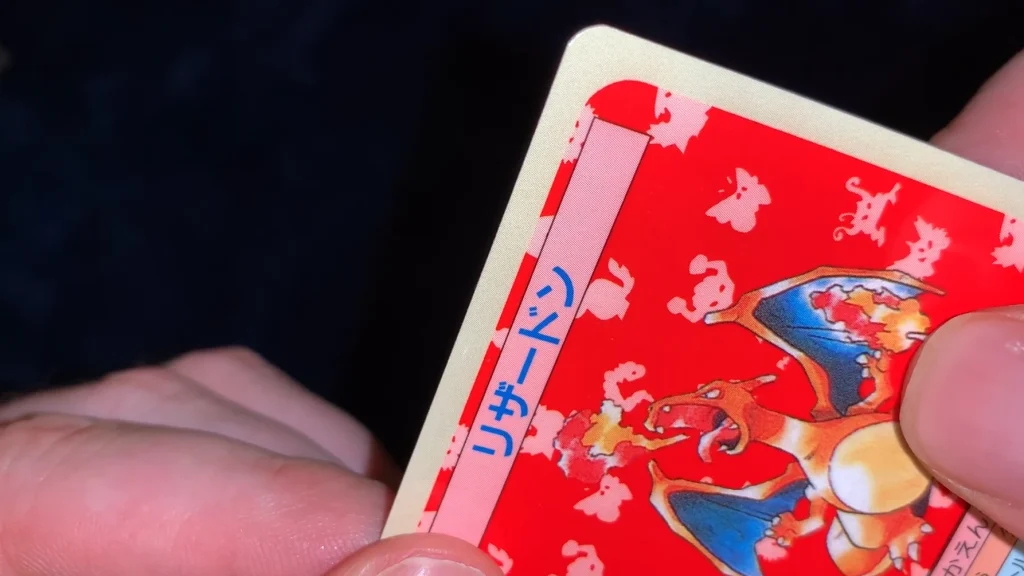
The title box on all original Topsun cards has a black border, except for the rare no-number misprint cards. These misprinted cards do not have a black border; the pink title box background is not separated from the red or green card background.
This is the easiest way to identify a fake misprint card. Any numbered card without a black border is also fake.
Note the black border and lack of Pokedex number. This indicates that this is a fake card
Color & Tint
There are six or seven colors to check on a TopSun Pokemon card. The background has a red, green, or halved red/green coloring. Checking this color is an excellent way to identify a fake card.
The five colors on the text boxes below the Pokemon are also indicators. Suppose you plan on collecting authentic Topsun cards. In that case, we recommend picking up a low-grade card like Caterpie (Worth around $20) as an on-hand comparison, as the gloss finish makes it very hard to compare cards digitally.
Text
As Topsun only printed cards in Japanese, identifying typos is challenging for non-speakers. It’s essential to check the rear of the card, too, as the blue or green text can also be faked. Fortunately, a careful comparison of images will reveal any inconsistencies.
Quality Of Pokemon Art (Print Quality)
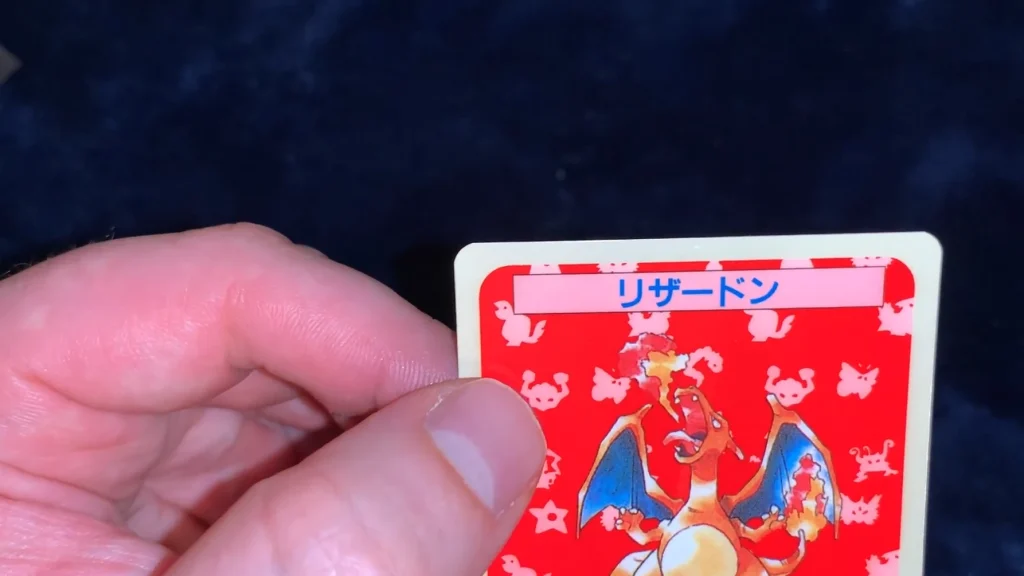
A black border should surround the art of the Pokemon on the front of a non-Holofoil card. Fake cards have inconsistent bordering.
Note the blurred arm on Charizard by the actor’s thumb. This indicates that the card is fake.
Matching Corners
Topsun Pokemon cards have more rounded edges than Pokemon TCG cards. If a Topsun card has identical corners to a Pokemon TCG card, it’s probably fake.
Another easy way to check is by comparing the corners of the background on the card to the card itself. Fake cards often accurately mimic the rounded background corners but not the card. If the background corners are more rounded than the card corners, it’s fake.
Note how the background border is not rounded in the same way as the card border.
While Topsun cards are relatively unknown amongst the wider Pokemon community, they are highly prized among collectors. While they can’t be used for gaming, a complete set of first-print Topsun cards is a remarkable display piece.
The American trading card manufacturer, Topps, often confused with Topsun, is also the source of many valuable Pokemon cards. Check out our guide on the most valuable Topps cards to see where these place in the collectible trading card hierarchy.

